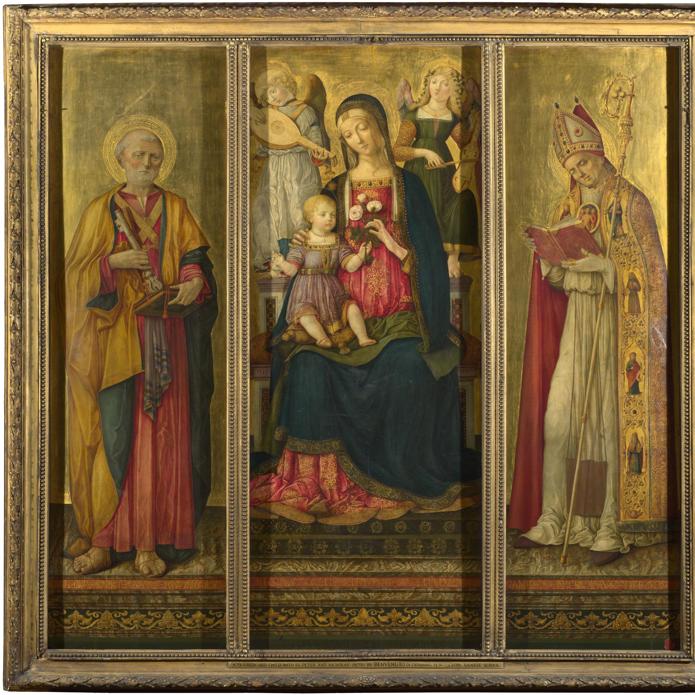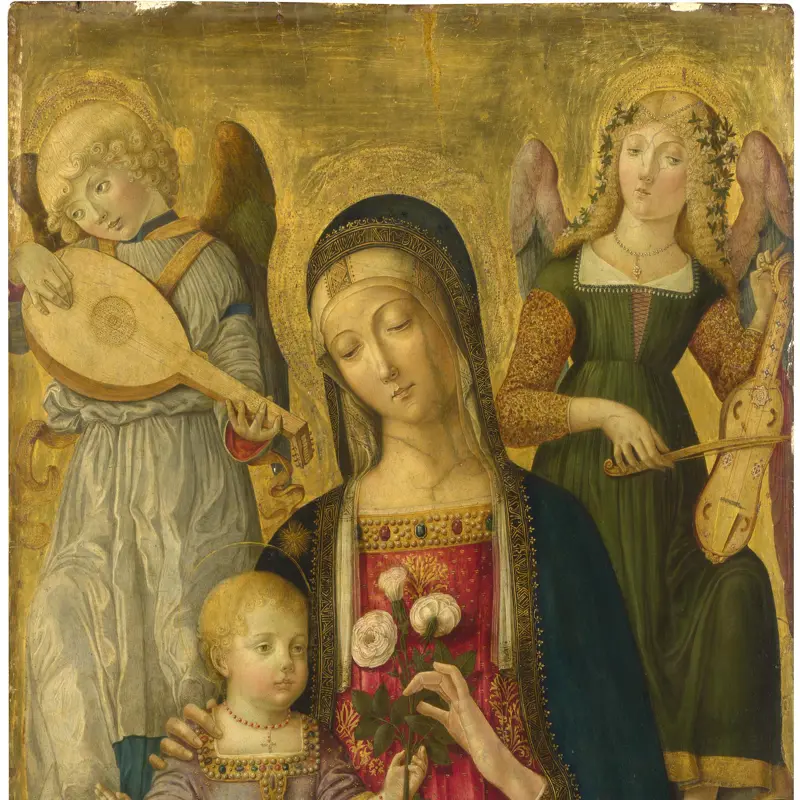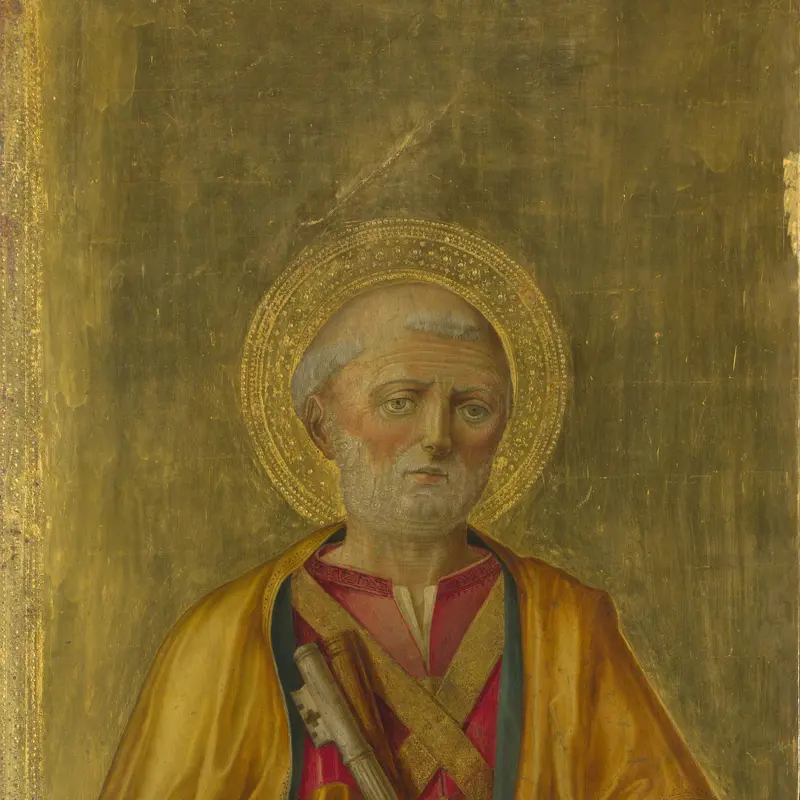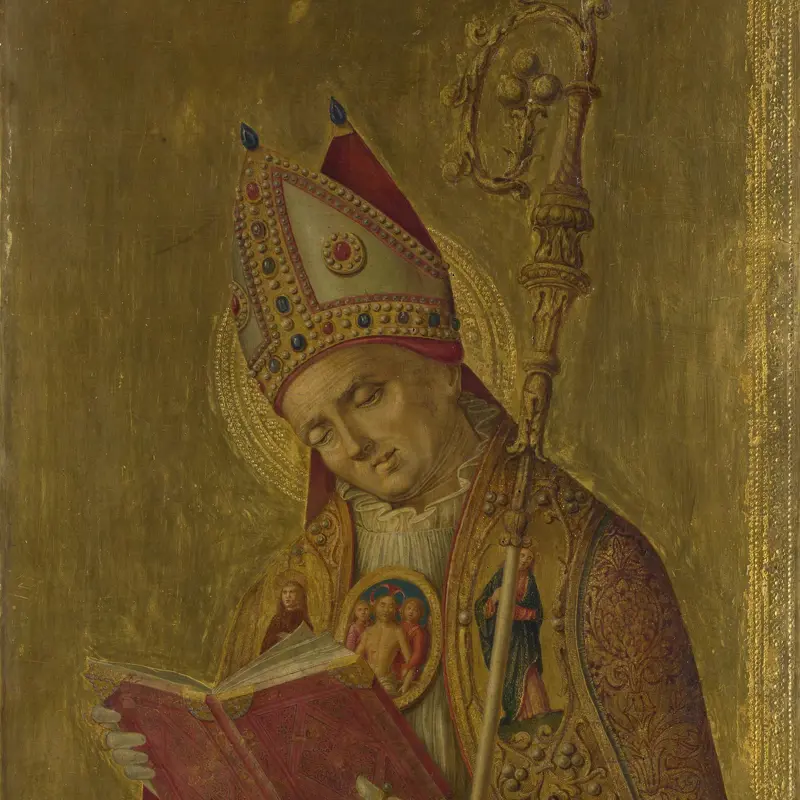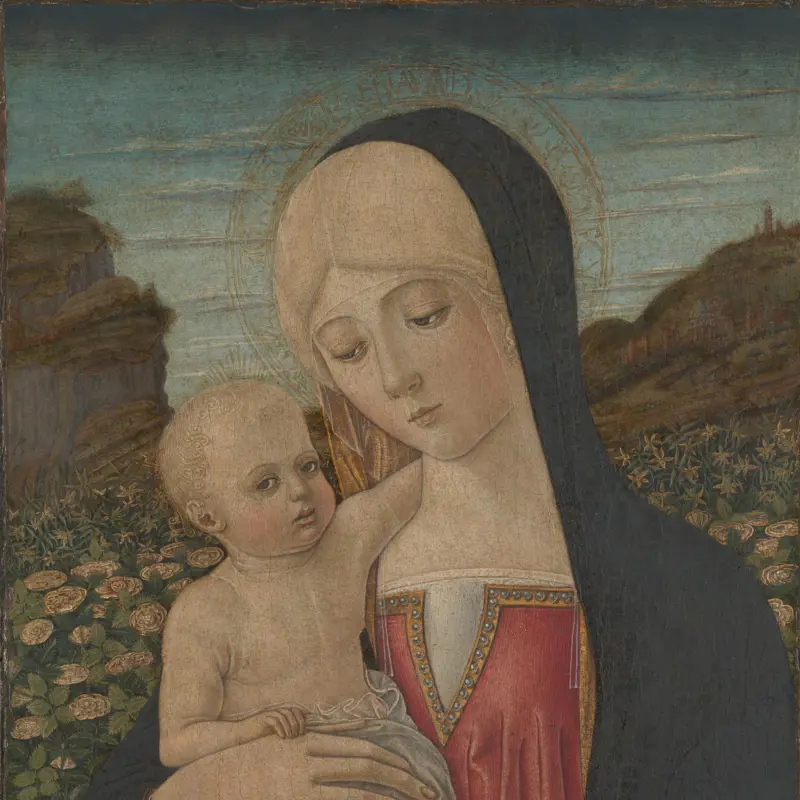Benvenuto di Giovanni, 'Saint Nicholas', 1479
About the work
Overview
A bishop saint, a mitre on his head and his crosier leaning casually against his shoulder, stands reading a book. This is Saint Nicholas of Bari, an enormously popular saint who is thought to have lived in the fourth century, and about whom almost nothing certain is known. This is the right-hand panel of an altarpiece made by Benvenuto di Giovanni, other parts of which are also in the National Gallery’s collection: The Virgin and Child and Saint Peter.
Although Benvenuto has here abandoned the pala format, which showed figures in a single unified space and which had become popular during the later fifteenth century, for a more traditional triptych (a painting in three parts), he was still interested in achieving a sense of naturalism and monumentality. Both saints are large in comparison with the Virgin and Christ Child in the centre, while Nicolas’s flowing cope, bowed head and slightly bent knee give a feel of the plasticity and mass of a three-dimensional form. His crosier even casts a shadow on the marble of the parapet.
Key facts
Details
- Full title
- Saint Nicholas
- Artist
- Benvenuto di Giovanni
- Artist dates
- 1436 - after 1509/17
- Part of the group
- Altarpiece: The Virgin and Child with Saints
- Date made
- 1479
- Medium and support
- Egg tempera on wood
- Dimensions
- 170 × 50 cm
- Inscription summary
- Inscribed
- Acquisition credit
- Bought, 1874
- Inventory number
- NG909.3
- Location
- Not on display
- Collection
- Main Collection
Provenance
Additional information
Text extracted from the ‘Provenance’ section of the catalogue entry in Martin Davies, ‘National Gallery Catalogues: The Earlier Italian Schools’, London 1986; for further information, see the full catalogue entry.
Bibliography
-
1951Davies, Martin, National Gallery Catalogues: The Earlier Italian Schools, London 1951
-
1986Davies, Martin, National Gallery Catalogues: The Earlier Italian Schools, revised edn, London 1986
-
2001
C. Baker and T. Henry, The National Gallery: Complete Illustrated Catalogue, London 2001
About this record
If you know more about this work or have spotted an error, please contact us. Please note that exhibition histories are listed from 2009 onwards. Bibliographies may not be complete; more comprehensive information is available in the National Gallery Library.
Images
About the group: Altarpiece: The Virgin and Child with Saints
Overview
Sienese painting of the second half of the fifteenth century blended the artistic ideals of its own time with a continued reverence for the language of earlier Sienese art. Nowhere is this more true than in this altarpiece, painted in 1479 by Benvenuto di Giovanni, possibly for a church in Orvieto.
In the centre the Virgin Mary is seated on an inlaid throne with the infant Christ on her knee; in the side panels saints stand like statues on a marble parapet which runs across the whole altarpiece. The figures are set against burnished and tooled gold backgrounds, and all are spectacularly dressed in accordance with the Sienese passion for jewels and textiles – but they look convincingly solid underneath their clothes.

